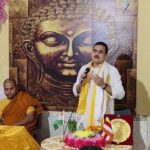DECAY AND DEATH OF OUR HERITAGE SITES
- By : Anirban Ganguly
- Category : Articles
Cultural landmarks of the country are languishing for want of proper care and protection. Humayun’s Tomb has been refurbished; others too deserve attention
Cultural and heritage conservation in India faces monumental neglect. At least that is what the recent Comptroller and Auditor-General’s Audit of Preservation and Conservation of Monuments and Antiquities has revealed. It is indeed deeply disconcerting to know that in a country like India, where the expressions of an uninterrupted civilisational continuity are palpably manifest, aspects of our culture and civilisation are allowed to decay and disappear. While much is being made out of the successful conservation of one Humayun’s Tomb, a large number of our heritage structures continue to remain in a state of disrepair and neglect.
The CAG audit report is alarming. Its findings starkly depict the absence of a national commitment towards the preservation and perpetuation of the symbols and expressions of our culture. These require serious consideration and urgently call for a wider debate.
The nodal Archaeological Survey of India, which has completed 150 years of its existence, has been, for years, unable to complete a number of its major excavation projects and is faced with ‘serious funds and manpower shortages’, especially for conservation-related activities which is supposed to be its main area of focus. Incidents of antiquity theft and smuggling of artefacts from the country are on the rise, while the country’s premier museums continue to lack resources and planning for proper upkeep, security and display of collected art objects.
Out of the 3,678 Centrally-protected monuments and sites spread nationwide, the CAG carried out an inspection of 1,655 monuments and sites. Leading museums in the country — among them the National Museum, New Delhi; Indian Museum, Kolkata; Asiatic Society, Kolkata and Mumbai; Salar Jung Museum, Hyderabad and Allahabad Museum — were also inspected in the course of the survey. The results have been bouleversant.
A look at some of the findings unravels the magnitude of cultural bungling in the country. A comprehensive identification of monuments of national importance which could be included in the list of Centrally-protected monuments has never been undertaken. The ASI, it emerged, does not have ‘a reliable database’ of the exact number of protected monuments under its jurisdiction. Of the sample 1,655 monuments selected for inspection, six per cent — 92 monuments — were ‘not traceable’.
The World Heritage Sites have not escaped the onslaught of an overwhelmingly callous attitude either, and are faced with inadequate care and protection while being plagued with encroachments and unauthorised constructions. Elementary requirements such as inspection notes on the condition of monuments, basic records, log books, site registers have ‘not been properly maintained.’ The ASI, the audit revealed, spends ‘less than one per cent of its total expenditure’ to further its primary activity — ‘exploration and excavation.’
The museums fare no better. Most museums, the report reveals, have no system in place to assess the genuineness of objects acquired; even as basic an exercise as the maintenance of an accession register is not being adhered to and a database of the total number of antiquities in the possession of the ASI has never been developed. This absence of a centralised information database has only facilitated the theft or loss of antiquities over the years. Betraying a mindset which is deficient in its understanding of the role of heritage in national life, our museums have not evolved a ‘rotation policy for displaying artifacts in galleries’. As a result ‘more than 95 per cent’ of the objects collected keep lying in reserve without ever seeing the light of eager eyes.
The report noted that the “governance from the Union Ministry of Culture was lax and was found to be deficient on aspects of adequacy of policy and legislation, financial management, monitoring of conservation projects and provision of human resources to these organisations.”

















